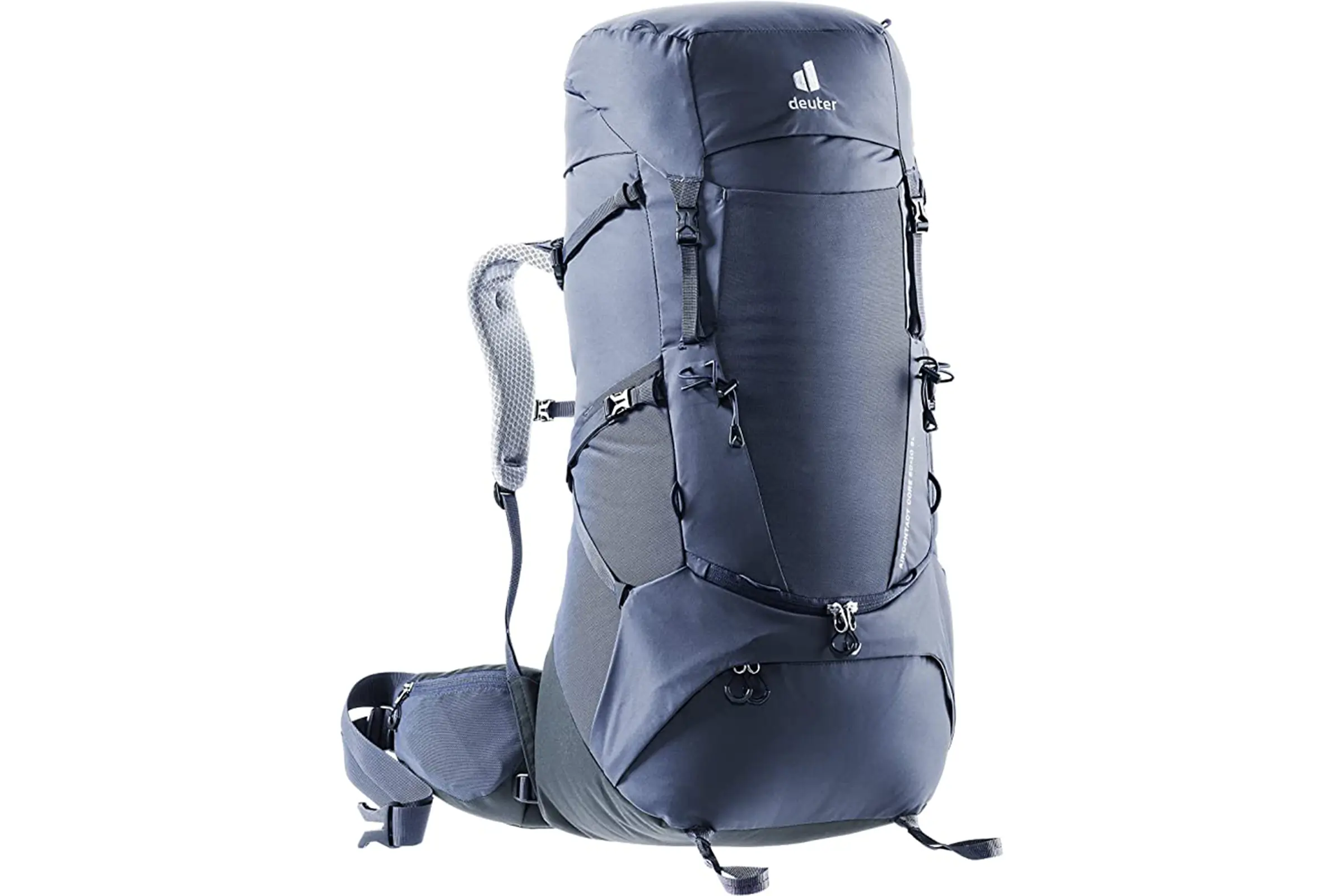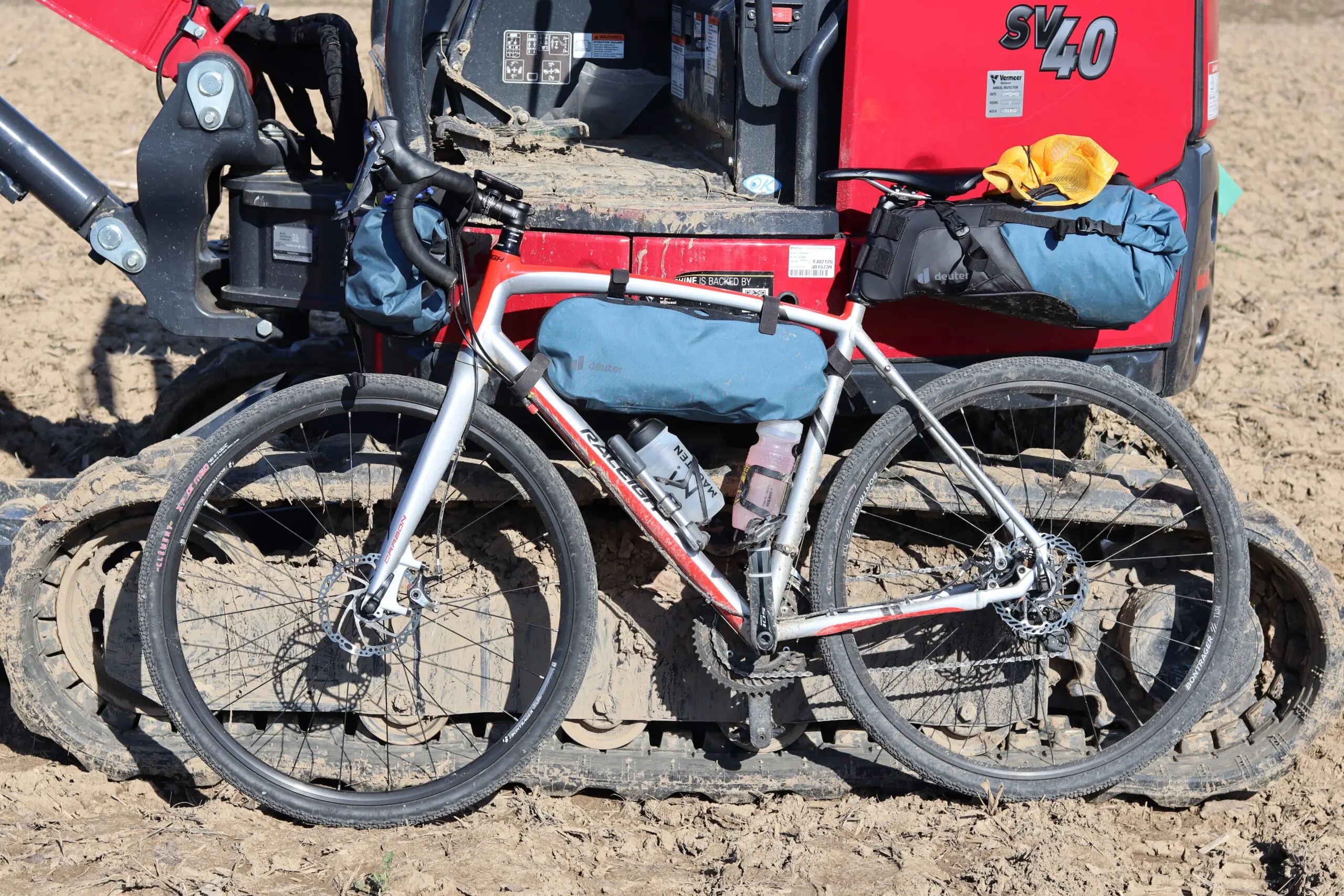My Deuter Aircontact Lite backpack has served me on more adventures than I can count. It’s been to the top of the Rockies, through the tallgrass prairies of the Badlands, and has camped with me on the coast at Second Beach in Olympic National Park. It’s been through rivers, sand, and mud and has collected plenty of dog hair over the years. It’s also earned my praise over the last decade — I usually recommend it to anyone who will listen.
It’s been a great bag. But Deuter discontinued it, replacing it with the nearly identical, slightly upgraded 2023 Deuter Aircontact Core Backpack. So this year, I tested out the newest model, to see how it stacked up against the one I fell in love with.
In short: The Deuter Aircontact series of backpacks is one of their flagship products, and it isn’t hard to tell why. These backpacks are built durably, designed with well-thought-out features, and made for backpackers who put a lot of miles on the trail and a lot of abuse on their packs. The old Aircontact Lite was my trusty trail companion for most of my adult backpacking career. I loved that bag. And I might love the new Aircontact Core, released in spring 2023, even more.
Why I Chose Deuter the First Time
My first Deuter pack — the Aircontact Lite — isn’t the one I intended to buy. I had just gotten back from a 10-day trip where I had borrowed a boyfriend’s bag. It didn’t fit me and hung terribly on my shoulders. The weight was being carried too low, beneath my hips. By the end of the trip, I was sore and determined to find a bag that fit me.
So I walked into REI, dead set on a different bag: the Osprey Ariel. It’s a sleek and aesthetically pleasing backpack and one I’d had my eye on for a while.
The fitter measured my torso and helped me adjust bags to test, loading them up with weight to see how they carried. I quickly learned that I have a very short torso. I was surprised because I’m fairly tall for a woman at 5’8”, but I am mostly legs.

The same employee convinced me to try the Deuter Aircontact Lite. He wanted to give me something to compare against the bag I had my heart set on. So I walked up and down the stairs several times, switching packs as I did, each of them fully loaded with weight. And trip after trip, I found the Aircontact felt more comfortable than the prettier, more expensive Osprey.
So I walked out of REI that day with the Deuter Aircontact Lite.
Deuter is an economical choice. The Aircontact Core sells for $250 — $10 cheaper than the Osprey pack. That’s not much of a difference. But at the time, I was working at a bike shop making pretty abysmal wages. So the price, along with the fact that it was actually more comfortable, changed my mind about what to buy. That was despite the fact that I really, really wanted the Osprey.
Now, a decade later, I have very few gripes with the Deuter Aircontact Lite. And almost all of them seem to be addressed in the latest model: the Deuter Aircontact Core.
The Upgraded Version: Deuter Aircontact Core 60+10 SL Backpack
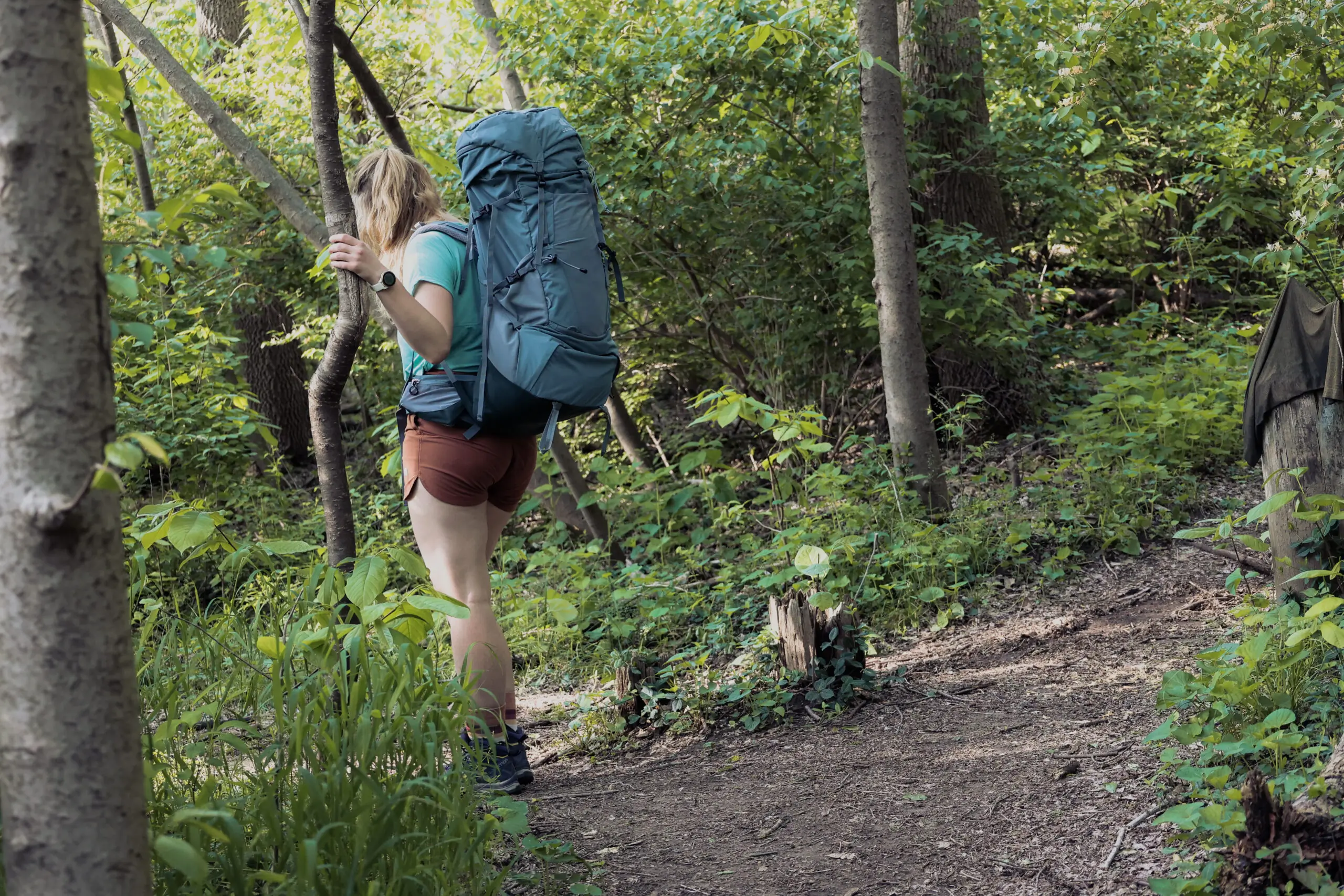



New Pack, New Colors
Deuter has hardly been lounging on the laurels of their success with the Aircontact backpacks this past decade. The updated Aircontact Core trekking bag has significant upgrades from my 2013 version — not least of all being the new color choices.
Some may find this particular assessment frivolous. But when you buy an expensive piece of gear, it’s nice to want to look at it. Many outdoor companies struggle to thread the needle between style and the perceived preferences for women’s colors. The green-gray Aircontact Core backpack manages to do that nicely.
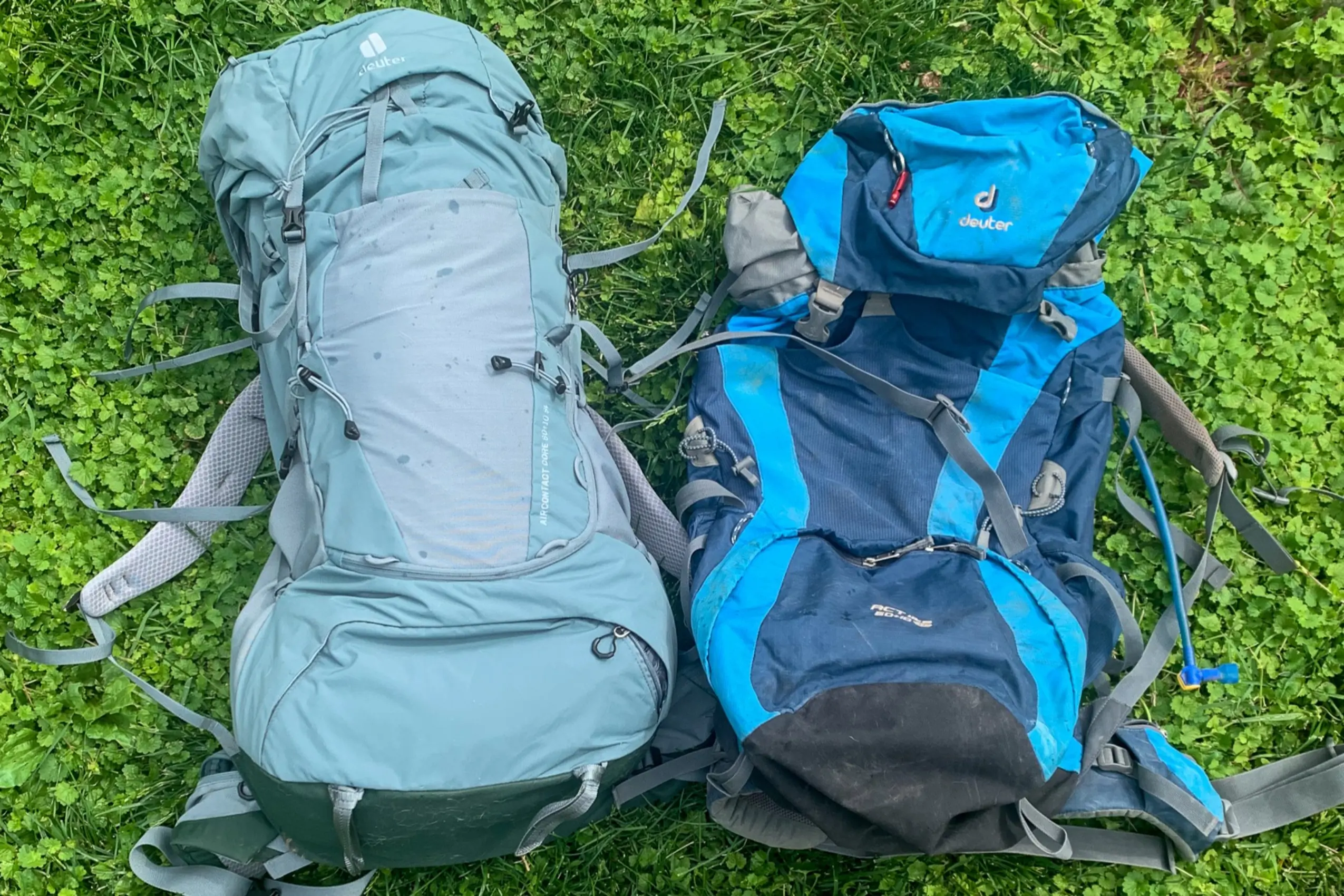



Front Access Zipper
One of the best practical upgrades on the new bag is the front loading capacity. As much as I love my old backpacking bag, I never used it for travel. Top-loading is great for weight distribution. But on the go, it can be a nightmare.
The front-loading zipper access makes this bag easier to get into and gives it a little more universal functionality. Especially for traveling.
As I compare the two bags side by side, there are measurable differences in strap ventilation. Maybe I’m being too hopeful to think the airy layers of mesh on the new pack will completely negate sweat stains. But it’s sure to hold them off for longer.
Another upgrade is the built-in external straps for carrying a foam sleeping pad or other bulkier items.
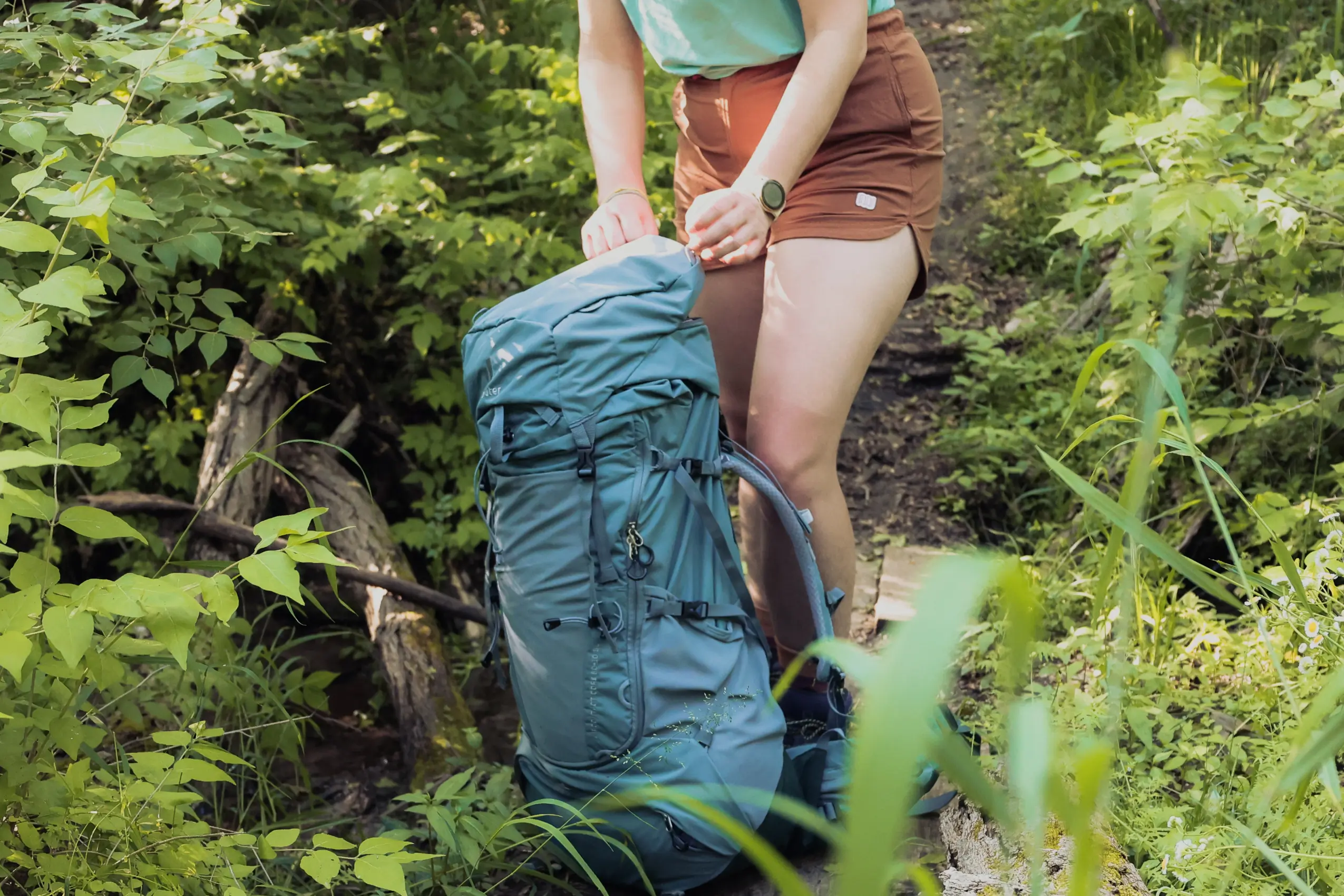



Fixing Old Issues
Some of the smaller gripes I had with the previous version — like the difficult-to-get-into front mesh pocket or the strap pockets that weren’t large enough to fit a modern phone — have all been modernized and fixed. The mesh of the new bag also seems stronger. That’s an important upgrade since the pocket of my old one has since ripped.
The Vari Slide system also makes adjusting the bag to fit your torso much simpler and easier to tweak on the go. There are many places to fine-tune the bag to your body, even more so than the older version. So it should be easy to find your perfect Goldilocks fit.
If there was one thing I wish they had upgraded, it’s the mesh style on the shoulder straps. The newer Aircontact Core offers more adjustments for moving the straps off your neck. But I still find some slight rubbing — which was my least favorite aspect of the older Aircontact Lite.
The problem is somewhat reduced in the newest version. But it isn’t completely mitigated. The mesh offers some ventilation. But the scratchy material can cause chafing on the skin, especially over the course of days- or weeks-long trips.
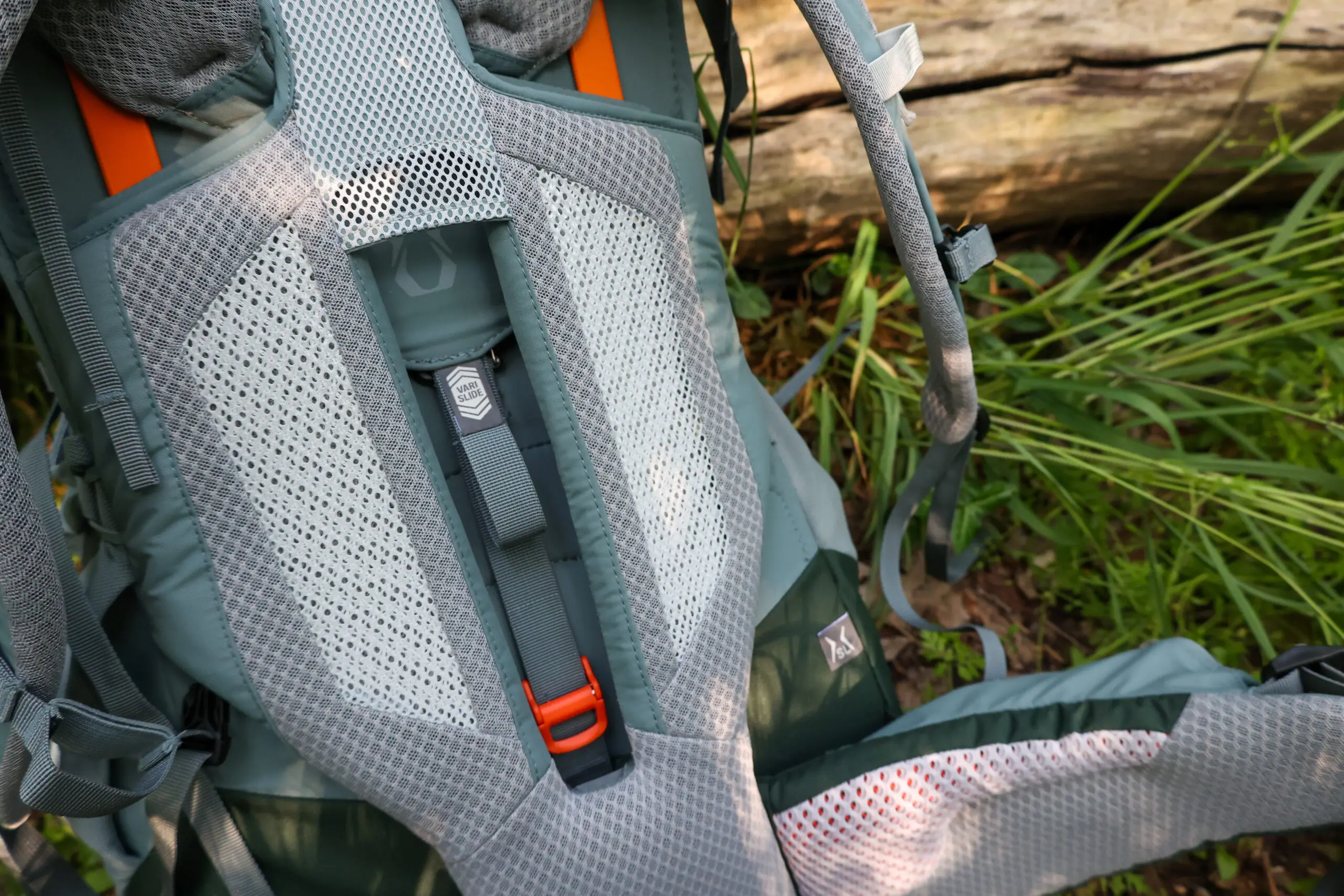



What Stayed the Same
Many of the features that I loved from the original remain in the Deuter Aircontact Core. The hydration pack storage and attachment in both packs is an incredibly simple pocket with a basic Velcro strap. It avoids many of the finicky attachments of its contemporary packs.
Deuter’s design seems to follow the old adage “keep it simple, stupid,” avoiding overcomplicated designs that can be unfriendly to users on the trail. One of the most notable features of this pack (that’s been a staple in both the Aircontact Lite and Core) is the additional storage. The 60L pack expands at the top to offer an additional 10 L of space should you need it. At max capacity, this pack can hold 70 L of gear.
And as many of us who enjoy the outdoors look at our consumption habits, Deuter’s commitment to being PFAS-free is another cherry on top of a great design.
Deuter Aircontact Core: For the Long Haul
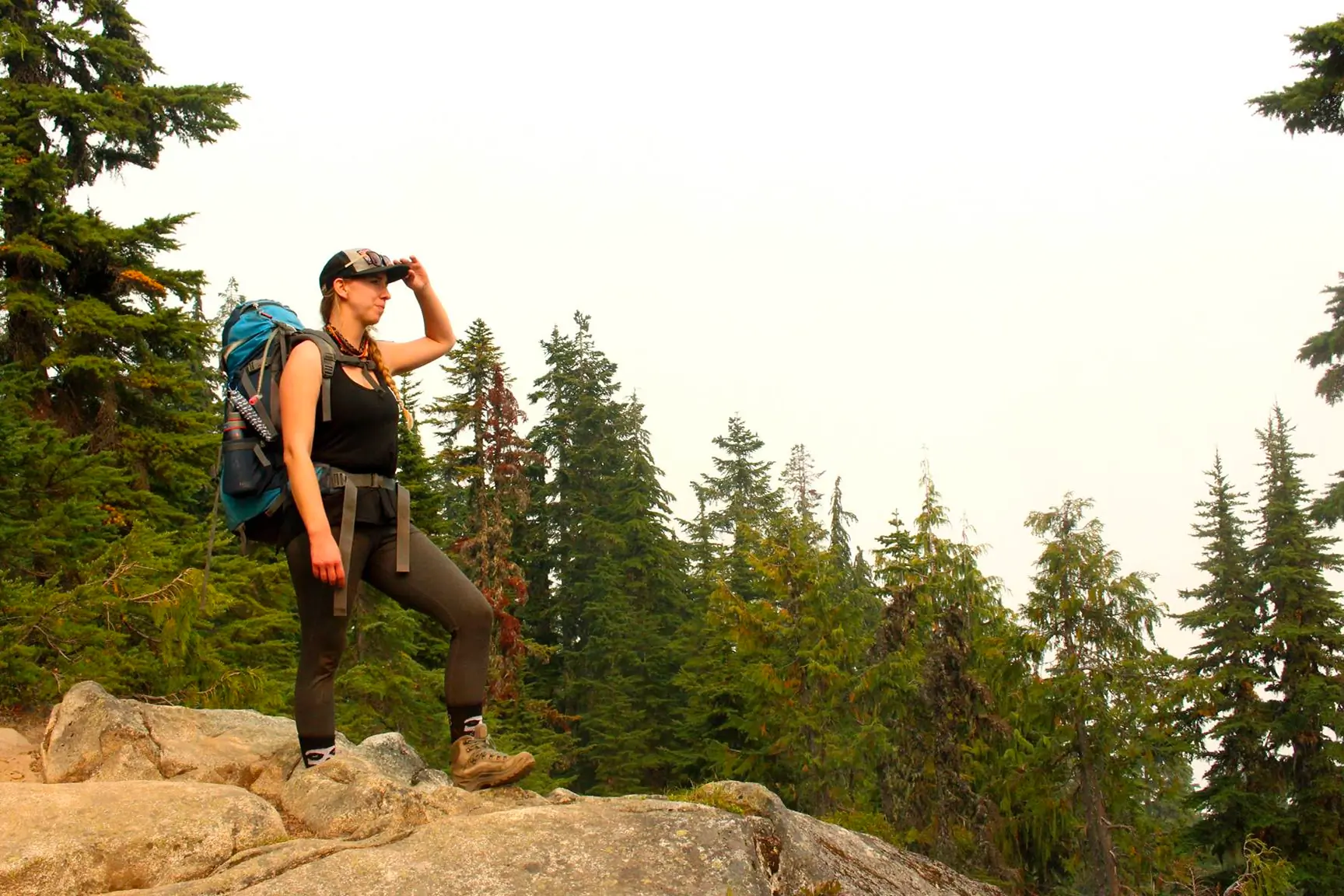



If you want a bag that will last you 10 years traveling coast-to-coast through mountains, deserts, beaches, or maybe just your local trail over and over and over, I feel confident from experience the Deuter Aircontact Core backpack is it.
My old Aircontact Lite served me well, suffering through use and abuse for a long time. And the new Aircontact Core will do the same. It’s a very solid pack that improved upon some of the few shortcomings that its predecessor had.
And if you don’t believe me, I can’t recommend enough that you go into an actual store and test it out yourself. You never know, it might completely change your mind like it did mine.

